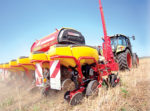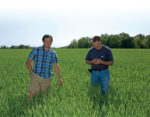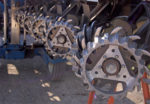Advertise Follow Us
Articles Tagged with ''planter''
From seed tubes and seed meters to ground sensors, new equipment coming on the scene can help no-tillers achieve more consistent stands and raise planting efficiency and yields.
Read More
What I've Learned from No-Tilling
Cover Crop ‘Epiphany’ Helps No-Till Take Another Step
A trip to North Dakota a few years ago sparked a new revolution for Curtis Furr’s decades-old no-till system.
Read More
If It’s Not Working Perfectly… Tweak It!
North Dakota strip-tiller Paul Anderson doesn’t just assume the equipment and strategies he uses will work. He makes them work by adapting them to his farm and needs.
Read More
No-Till Brings New ‘Shade’ Of Higher Yields, Profitability
Johnny and Brian Moore’s switch to no-till, cover crops and a diverse rotation has stopped erosion, improved organic matter and made their North Carolina farm’s high-clay soils more productive.
Read More
Row Cleaners: Coming Of Age
Engineering improvements and on-the-go adjustment are making it easier for no-tillers to clear residue from the row and improve seedling emergence, crop stands and yields.
Read More
Flat, Table-Top Fields Need Moisture-Driven Management
Illinois strip-tiller shares lessons he learned while struggling with bad weather and cold, wet fields.
Read More










